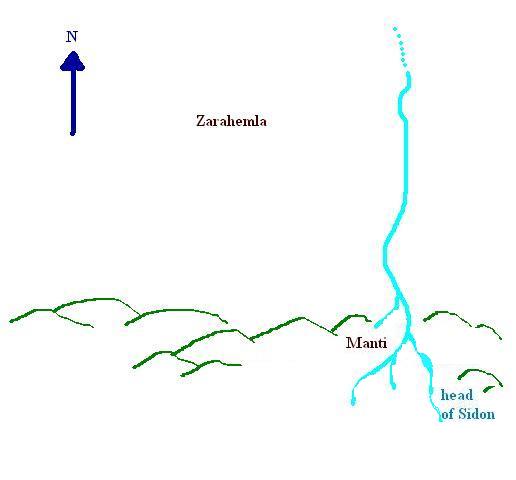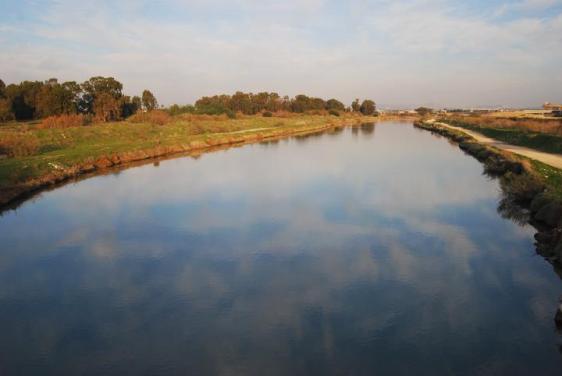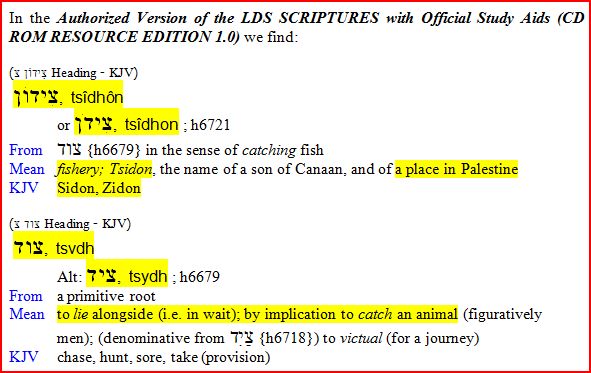|
Was
Apostle McConkie right about Sidon
after all?
Introduction
LDS
Apostle Bruce R. McConkie taught that some Church leaders “know more and
have greater inspiration than others.” He went on to advise that if a Church
leader were to teach something “out of harmony” with LDS scripture, “…it is
the scripture that prevails. This is one of the reasons we call our
scriptures The Standard Works. They are the standard of judgment and
the measuring rod against which all doctrines and views are weighed, and
it does not make one particle of difference whose views are involved. The
scriptures always take precedence.”
(McConkie, “Honest Seekers of Truth”, 1 July, 1980; See also STANDARD
WORKS, Mormon Doctrine, pp 764-765; Dennis B. Horne, Bruce R.
McConkie Highlights From His Life & Teachings, pp 143-144)
Previous
to the publication of the 2013 edition of the LDS Scriptures, the ”TRIPLE
COMBINATION INDEX” (Index to the Book
of Mormon, Doctrine and Covenants
and Pearl of Great Price) featured
the following entry on the Book of
Mormon “river Sidon”:
SIDON, RIVER—most prominent river in Nephite territory, runs north to sea
(see also River)
Alma 2:15 hill Amnihu is on east of
S.; 2:34 Lamanites camp on west of
S.; 4:4 many are baptized in
waters of S.; 22:29 wilderness at
S.
(Index |
S
Sidon,
River: Entry)
This
seemingly innocuous index entry was recently reviewed by a Church committee.
The index note has been changed to read:
SIDON, RIVER—most prominent river in Nephite territory.,
runs north to sea (sSee
also River)
...
Ostensibly,
the late
Bruce Redd McConkie
was responsible for the statement that Sidon “runs north...” Some
questions remain about the change:
Was
there no scriptural basis for his conclusion? Is that why a Church
committee decided to amend Apostle McConkie’s comment? If Elder McConkie
was asserting something that was not based on scripture then perhaps his
comment should have been amended. But is this
really the case in regards to the Sidon note? Did Elder McConkie
make an unscriptural statement in asserting that
the river Sidon “runs north to sea”?
Or is it
possible that the recent committee didn’t know the scriptures on this
point quite as well as Apostle McConkie? Could Elder McConkie have had a
higher
IQ
(Inspiration Quotient) on the subject?
Could it
be that because the committee could not see
where (in
scripture) the direction
of Sidon’s flow is explicitly
stated, that they assumed that the Book of Mormon does not indicate which way the river flows?
Did Church authorities,
who favor the emerging
Heartland Book of Mormon geography
model, influence the committee? The Heartland model asserts that
Sidon
is the southward rolling Mighty
Mississippi!
Is the
Sidon
amendment a kind of
compromise in light of opposing views?
If not
a nod to Heartland model advocates, could the amendment have
something to do with easing or avoiding controversy?
Did
the committee simply not want to deal with the issue and so eliminated Elder McConkie’s comment from the INDEX?
But what
if Elder McConkie’s statement about
Sidon’s direction is true?
See if you
have the scriptural acumen to reach a conclusion similar to Apostle McConkie's, regarding the direction of
Sidon’s flow:

Based on scriptural facts, Sidon
flows in what general direction along the east of Zarahemla?
FACT:
The Book of Mormon patriarch Lehi defines for us a river’s “head” as its source from whence the
river comes.
13
And as I cast my eyes round about, that perhaps I might discover my
family also, I
beheld a river of water; and it ran along, and it was near the
tree of which I was partaking the fruit.
14
And I
looked to behold from whence it came; and I saw the head thereof a little
way off; and at the head thereof I beheld your mother Sariah, and
Sam, and Nephi; and they stood as if they knew not whither they should go.
(Book of Mormon
| 1 Nephi
8:13 -
14)
Lehi’s
words fit the accepted definition of a
river’s head or headwaters
. A rivers
source is called its “head” (situated at higher elevation) because water
tends to flow downhill from its source. A confluence of rivers lower down
does not constitute the head of a descending river. For example: the
confluence of the Blue Nile and the White Nile is not the head of the Nile.
But
Heartland model promoters would have you believe that the mouth of the Missouri (its confluence with the
Mississippi) can be termed the head of the
Mississippi
(alleged “Sidon”).
Their redefining of a river’s head is an act of obfuscation, if not
outright prevarication. Even so, there seems to be plenty of folks who are
willing to go along with the Heartland model hand-wave.
Heartland setting
proponents want folks to believe that the Iowa Mormon settlement given the
namesake “Zarahemla” (across
Old Man River
from Nauvoo) resides in the Book of Mormon
land Zarahemla, even though LDS scripture does not say this!
(LDS Doctrine and Covenants 125:1-3)
FACT:
The head of the Book of Mormon
river Sidon is located southward from the environs of the Nephite
city of Zarahemla.
The head of the river Sidon was located near
the southern Nephite land
of Manti. The 2013
new edition of the TRIPLE COMBINATION INDEX even recognizes this:
MANTI, LAND OF— land south of Zarahemla.
See
also Manti, City of
Alma 16:6–7
Zoram2 and sons march beyond borders of
M.; 17:1 Alma2 meets sons of Mosiah2 while on
way to M.; 22:27 proclamation sent
to people of M.; 43:22
head of river Sidon
near M.; 43:24–25 Nephite
and Lamanite armies converge on M.;
43:26 Moroni1 gathers people in land to battle Lamanites;
43:27–54 Nephites defeat Lamanites near borders of
M.; 56:13–14 Lamanites possess
M.; 58:26–30 (59:6) Nephites march
toward M. by night.
(2013 edition
Index |
M
Manti,
Land of: Entry)
These simple
facts alone indicate that Sidon
likely flows in a northward direction (along the east of Zarahemla), from its southern “head” or source near Manti.
But there’s more:
Like the western NY countryside of young Joseph
Smith, the main geography of the Book of
Mormon has a general southern rise in elevation. For example, from
the northern Jaredite land of Desolation one goes “up” to the land of Bountiful just to the south:
31
And they came from there [Desolation] up into the south
wilderness. Thus the land
on the northward was called Desolation, and the land on the southward was
called Bountiful, it being the wilderness... (Alma
22:31 – emphasis added)
From the land
of Zarahemla (south of Bountiful) one goes “up” to the land of Nephi
(further south):
7 Nevertheless they
departed out of the land of Zarahemla...
8 And thus they
departed into the wilderness … to go
up to the land of Nephi …
(Alma 17:7-8 – emphasis
added)
The “head
of the river Sidon” situates in the southern
highlands near the Nephite
land
of Manti. Sidon is also
near the
“line” of demarcation or “narrow strip of wilderness”
which runs from a body of
water called “the east sea” to “the west sea”. The east-west “line”
separates the lower land of
Zarahemla, from the more elevated
land of Nephi
(Alma 50:7-8) to the south:
27 … [the land of
Nephi] bordering even to the sea, on the east and on the west, and which was
divided from the land of Zarahemla by a narrow strip of wilderness, which
ran from the sea east even to the sea west, …, through the borders of
Manti, by the head of the river Sidon, running from the east towards the
west—and thus were the Lamanites and the Nephites divided.
(Alma 22:27)
11 And thus he
[Chieftain Moroni] cut off all the strongholds of the Lamanites in the east
wilderness, yea, and also on the west, fortifying the line between
the Nephites and the Lamanites, between the land of Zarahemla and the land
of Nephi, from the west sea, running by the head of the river Sidon—the
Nephites possessing all the land northward, yea, even all the land which was
northward...
(Alma 50:11)
Fact:
The southern Nephite – Lamanite dividing line, near the “head of
Sidon” is at higher elevation than the
land
of Zarahemla (“down”).
In other words,
Manti and
the neighboring head of the river
Sidon
were “up” with respect to
Zarahemla. From its “southward” headwaters by Manti (south of
Gideon), the river Sidon flowed along the east of Zarahemla (west
of Gideon):
25
Neither durst they march down against the city of
Zarahemla; neither durst they cross the head of
Sidon, over to the city of
Nephihah.
(Alma 56:25
– emphasis
added)
26
…the city of Nephihah,
…on the east borders by the seashore. (Alma
51:26)
7
…Alma …in the city of
Zarahemla, …went over upon the east of the river
Sidon, into the valley of Gideon…
(Alma 6:7)
1
…Alma was journeying from
the land of Gideon southward, away to the
land
of Manti, behold, to his
astonishment, he met with the sons of Mosiah journeying towards the land of Zarahemla.
(Alma 17:1)
6
…the Lamanites will cross the river Sidon
in the south wilderness, away up beyond the borders of the land of Manti.
And behold there shall ye meet them, on the east of the river
Sidon….
(Alma 16:6
– emphasis
added)
22 …in the wilderness,
away by the head of the river Sidon, that
they might come into the land
of Manti...
(Alma 43:22)
The river
Sidon is of course never mentioned in the land of Nephi
which situates southward from the river’s head and which resides at higher
elevation than the land
of Zarahemla.
The “course of the land of Nephi” near
“the line”
running by the head of
Sidon, was “above the land of Zarahemla”.
(Alma 2:24;
50:8,
11)
More
scriptures referring to Sidon on the east of
Zarahemla:
Alma 2:16,
26-27,
34;
6:7
Fact:
The “river Sidon” is passable on foot near its southern
head and downstream as it flows on the east of Zarahemla.
(Alma 43:40;
2:26-27;
6:7)
Of the
several referenced to the river Sidon in
the
book of
Alma, only
east and west
sides of the river are mentioned.
(Alma 2:34;
6:7;
8:3;
16:6;
43:27,
32,
35-36,
51-53,
Alma 49:16)
There is no indication that the river takes an extreme east or west
excursion from its southern head, before flowing along the east of Zarahemla. The thing
referred
to as
“…running
from the east towards the west” in Alma 22:17
is a “narrow strip of wilderness, which ran from the sea east
even to the sea west … by the head of the river
Sidon …”
The Book of Mormon does not use
the expression Sidon River,
with “river” capitalized. The expression “river Sidon” =
“נַחַל צִּידֹן” (in
Hebrew)
transliterates as “nahal
Tsidon”. The Hebrew word “nahal =
נַחַל”
can mean either “river” or “brook”. The fact that Sidon is the only
“river”
explicitly
named in the Book of Mormon’s
American setting, likely has more to do with the fact that principal Nephite
lands are geographically very localized - comparable in size to the land of
Israel in the Old World. This means that
Sidon
does not have to be a particularly impressive river.
The
rivers of Israel
were not very impressive to outsiders like Naaman the Syrian.
(2 Kings 5:12)
To put things in scriptural perspective, Sidon should probably
be compared more to the northward flowing “brook” or “river Kishon =
נַחַל קִישׁוֹן”
of northern Israel; which, though it is small, nevertheless swept away
defeated dead as it flowed out to the great western sea (the inland
Mediterranean).
(Judges 5:21,
1 Kings 18:40 compare with
Alma 3:3;
44:22) The biblical brook - river
Kishon was
famous to Israelites if to no one else.

The northward flowing
“nahal Kishon”
Thus there is
no scriptural justification for supposing that Nephite Sidon is a
particularly mighty river comparable to the Nile or the
Euphrates. There is no indication in scripture that
Sidon
was used for shipping on a scale comparable to one of the ancient sea-like
rivers of the Old World, or on a scale comparable to the traffic of the port
city Zidon (Sidon).
We need only search out the meaning of the ancient name to understand why a
creek or river would be called “Tsidon” = “Fishery” or “Catchery” or “Place
of catching” (there is no explicit reference to fish in the
name). No traffic of large merchant ships is necessarily implied.
[See
Footnote from
LDS Scripture Official Study Aids]
It is possible, however, that a major Nephite port was built at the mouth of
the river Sidon.
Large ships may have harbored there and even trafficked along the river, near
its mouth.
We know
that Sidon
flowed out to sea
(Alma 3:3;
44:22),
but which sea?
The Book of Mormon
indicates that it was in the “west sea” that “exceedingly large” Nephite
vessels sailed.
(Alma 63:5-8,
Helaman 3:10) Similarly, the Mediterranean port city of Haifa
situates at the mouth of the river Kishon.
Haifa
is the Israeli equivalent of
Tyre or Sidon
of old.
Could their have been a port named "Tsidon" near the mouth of the
American river?
Some may interpret Elder McConkie’s note that
Sidon
“runs north to sea”, to mean that
Sidon
maintains an unswerving northward course out to some sea; much like
Colombia’s
thousand
mile Magdalena River (far too long to be Sidon). But, scripture doesn’t
actually say that after flowing along the east of Zarahemla, the river
continues northward to a sea.
It may be
significant that Sidon is never mentioned in,
or as flowing through, or by the lands of Bountiful and Desolation which are north of Zarahemla.
We do know that “the land of Nephi and the land of Zarahemla
were nearly surrounded by water”.
(Alma 22:32) After flowing on the east of Zarahemla, the river Sidon
may bend westward, constituting a watery northern border, as it flows out to
the Book of Mormon “west sea”. In fact,
Mormon 1:10 describes,
"...the borders [plural] of Zarahemla, by the waters of Sidon."
So based on the Book of
Mormon, in what general direction does Sidon likely flow as it runs
along
the east of Zarahemla?
Perhaps
the Church committee working on the 2013 edition noticed that even though Sidon likely runs northward along the east of Zarahemla
(from its southern head in the highlands near Manti), that the
Book of Mormon does not explicitly
say that Sidon
maintains a direct northern course out to sea. In other words, Elder
McConkie could have been quite correct in concluding that
Sidon
generally flows northward, but extrapolated, or over-generalized when he
stated that Sidon
“runs north to sea”.
The
amended INDEX entry might therefore have properly read something like this:
SIDON, RIVER—the only river explicitly named in local Nephite territory, likely runs northward
on the east of Zarahemla from its head in the southern highlands near Manti;
and thereafter, by an unspecified way, flows out to a sea (see
also River)
Alma 2:15
hill Amnihu is on east of S.; 2:34
Lamanites camp on west of S.; 4:4
many are baptized in waters of S.;
22:29 wilderness at S.
But not
wanting to add such detail, the committee may have opted instead to simply
delete Elder McConkie’s over-generalized statement that Sidon “runs north to sea”.
The Nephite river “Jordan” (Likely the
northward flowing Genesee) is implicitly named in scripture, in that a
nearby city was named after it.
(Mormon 5:3)
Consider the meaning of the name “Yarden” or “Jordan”.
Do you see why the name describes a river?
Footnote

Words likely related to Tsidon (i.e.
Sidon son of
Canaan,
Genesis 10:15)
tsood (צוּד) = hunt (Brown-Driver-Briggs-Gesenius
Hebrew – Aramaic Lexicon, 6679, pg. 844)
tsayid (צַיִד) = hunting
game, provision, food (Brown-Driver-Briggs-Gesenius Hebrew – Aramaic
Lexicon, 6718, pp.
844, 845)
tsayad (צַיָד) = hunter
(Brown-Driver-Briggs-Gesenius Hebrew – Aramaic Lexicon, 6719,
pg. 844)
tsid (צִד) = take as
one’s provision (Brown-Driver-Briggs-Gesenius Hebrew – Aramaic Lexicon,
6719, pg. 844)
Tsidon (צִידוֹן) = place
of catching, possibly “fishery” by implication, but there is no explicit
reference to fish in the name Sidon.
Of course, in the Americas, there are several rivers with names
like
“Fishing River”
(LDS Doctrine and Covenants 105 chapter heading) or
“Fish River”.
This doesn't mean that any of these is “Sidon” (catching place) of the Book of Mormon.
Its a fishy argument. Don't get caught by it!
Crossing Sidon
(YouTube)
|